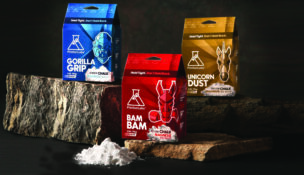Small processors step up to ease beef supply-chain woes
Plus, how smaller Colorado operations thrived amid the calamity of COVID-19
Eric Peterson //July 27, 2020//


Small processors step up to ease beef supply-chain woes
Plus, how smaller Colorado operations thrived amid the calamity of COVID-19
Eric Peterson //July 27, 2020//
When one of the largest outbreaks of COVID-19 shut down JBS USA’s meatpacking plant in Greeley for nine days in April, it sent a shockwave through the beef supply chain.
The closure of the 3,000-employee plant, and others like it across the U.S., made for a bottleneck for the cattle ranchers who supply JBS. It also raised the specter of a beef shortage, spurring a spike in retail prices.
Critics say the problem stems from an oligopoly: “Big Meat” — JBS, Cargill, National Beef and Tyson — commands about 85% of the U.S. market. That’s more than the five largest meatpackers controlled before antitrust measures loosened their grip in 1920.
There are outliers in the form of small, direct-to-consumer operations in Colorado that have thrived amid the calamity of COVID-19. “We’ve seen a definite uptick in our business,” says Natalie Allio, co-owner of Badger Creek Ranch near Salida.
Utilizing a local USDA-inspected processing facility, the operation markets grass-fed beef, lamb and pork via farmers markets and delivery. The small processors have been “inundated” with the closures of big plants, Allio says.
There’s no panacea. Allio sees some relief if Colorado opts into USDA programs that allow state-inspected facilities to process meat, or follows Wyoming’s lead in allowing some small producers to bypass inspection altogether. Mobile processing businesses could also help.
“None of this is a silver bullet,” says Patricia Dowd, policy director for the Western Landowners Alliance, a nonprofit focused on the conservation and sustainability of working lands. “It works for small processing, but obviously it isn’t going to compete with four huge corporations.”
Most observers agree the most impactful option involves decentralization, with massive investment into smaller processing facilities nationwide.
At James Ranch near Durango, Joe Wheeling runs the direct-to-consumer beef operation with his wife and a partner family. “Typically, we process about 150 head a year,” Wheeling says. “Normally, I carry enough inventory to have a couple months’ cushion.” That cushion is notably smaller in 2020. Many cuts are out of stock, and replenishment requires a year or more.
With the disruption at JBS and other big facilities comes higher retail prices. “We haven’t touched our prices at all,” says Wheeling, noting a local market was selling New York strip steaks for about $5 more a pound than James Ranch. That’s saying something for James Ranch’s grass-fed, hormone-free product, he notes. “We’re not cheap. Now all of a sudden, we are way under the market.”
The pandemic has exposed plenty of fault lines that could be fortified by a pivot to more local production, he adds. “This whole system – cheap labor, cheap feed, big feedlots – it’s all about scale,” Wheeling says. “When you throw a wrench into that system, you have animals being euthanized, and people suffering, not making enough money to continue their businesses.”
After sending animals to Utah for processing, James Ranch has contracted with Sunnyside Meats in Durango since 2002. Sunnyside owner Holly Zink says the USDA-inspected facility normally is at maximum capacity from July to January. In 2020, it was operating at maximum capacity as of April. Volume was up nearly 50% in April and May.
Zink says the pandemic could catalyze long-term change in consumer behavior toward local beef, but she’s not overly optimistic that it will. “I would like to think this would be an eye-opening event,” she says. “Too much centralization causes us to have a fragile system.”






















